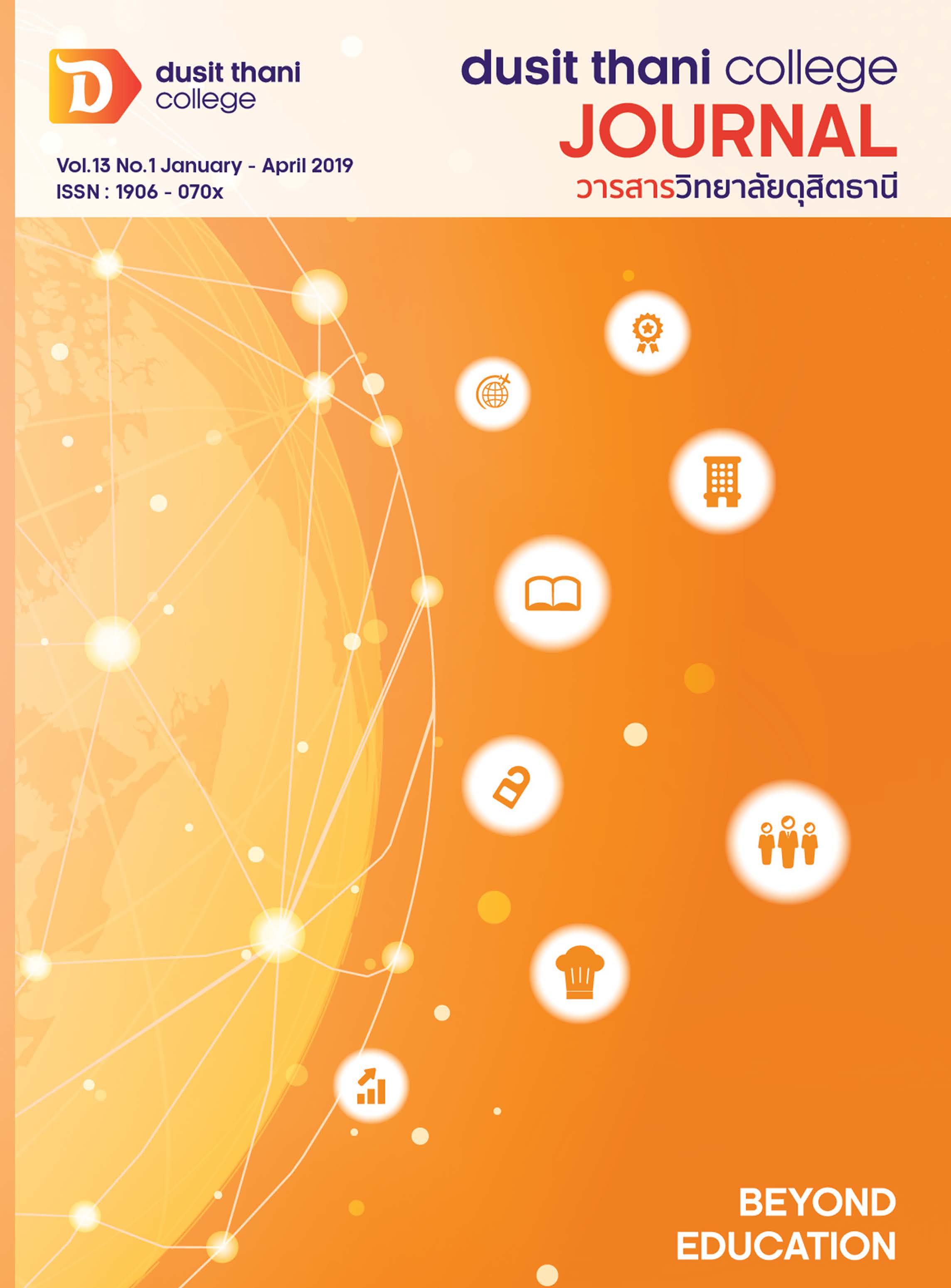Guidelines of Tourism Safety Management of Hua-Hin, Prachuap Khiri Khan as Tourist Destination for Foreign Tourists
Main Article Content
Abstract
This study aims to present the guidelines of tourism safety management of Hua-Hin, Prachuap Khiri Khan as tourist destination for foreign tourists. The results found that the strength cooperation from all stakeholders, including government sector, private sector, local community and tourists are needed. The government sector is responsible for; 1) Imposing penalties and enforcing the law to serious offenders; 2) Developing safety and sanitation systems in tourist attractions; 3) Coordinating and cooperating between agencies; 4) Developing of people. 5) Producing a guidebooks for tourists; 6) Developing transportation system quality; 7) Developing mechanisms and channels for notification; 8) Developing government working system; and 9) Solving deception and taking advantage of tourists. The private sector is responsible for; 1) Strictly obeying the law; 2) Coordinating with government sector; 3) Improving quality standards of tourist attractions and entrepreneur sites; 4) Developing the quality of personnel; 5) Security surveillance; and 6) Having a conscious mind of tourism. The community is responsible for; 1) Risks surveillance; 2) Report the relevant risks to the government; and 3) Assisting tourists when they are encounter danger. Tourists are responsible; 1) Being aware of potential dangers; and 2) Learning information about tourist destinations visited.
Article Details
Article Screening Policy
- All research and academic articles to be published must be considered and screened by three peer reviews in the relevant field / article.
- All articles, texts, illustrations and tables published in the journal are the personal opinions of the authors. Editors don't always have to agree. And no responsibility whatsoever is the sole responsibility of the author.
- The articles to be published must never be published. Where did you first publish? And not in the consideration of other journals If the audit found that there has been a duplicate publication It is the sole responsibility of the author.
- Any article that the reader sees as being plagiarized or impersonated without reference. Or mislead the work of the author Please let the journal editor know it will be your greatest blessing.
References
2. Ashton, A. S., & Chootiraka, M. (2016). Mitigating destination risk perception: study on international retirement migration tourists in Thailand. CAUTHE 2016: The changing Landscape of Tourism and Hospitality: The Impact of Emerging Markets and Emerging Destinations. Sydney: Blue Mountains International Hotel Management School.
3. Boakye, K. A. (2012). Tourists’ views on safety and vulnerability. A study of some selected towns in Ghana. Tourism Management, 33(2), 327-333.
4. George, R. (2003). Tourist’s perceptions of safety and security while visiting Cape Town. Tourism Management, 24(5), 575-585.
5. Janchai, Napaporn. (2016). Efficiency of Tourism Development from Government Policy to Practice Case Study: Hua Hin, Thailand. SDU Research Journal Humanities and Social Sciences, 12(2), 191-211.
6. Janthadech, Thanasin. (2017). Guidelines for the development of personal production programs in tourism industry to front office service for enhance the competitiveness of the Asean community. VRU Research and Development Journal Humanities and Social Science, 12(2), 89-102.
7. Mansfeld, Y., & Pizam, A. (Eds.). (2006). Tourism, security and safety: from theory to practice. Oxford: Elsevier Butterworth-Heinemann.
8. Ministry of Tourism and Sports. (2017). Tourism Development Plan 2 (2017-2021). Bangkok: The War Veterans Organization of Thailand press.
9. National Institute of Development Administration. (2016). Strategic plan to building
confidence in the safety of life and property of foreign tourists. Retrived November 15, 2017, from http://www.jpp.moi.go.th/media/files/25_01_59.pdf.
10. Tarlow, P. E., & Santana, G. (2002). Providing safety for tourists: a study of a selected sample of tourist destinations in the United States and Brazil. Journal of Travel Research, 40(4), 424-431.
11. Taweephol, Rachanon., & Chuntuk, Thirawat. (2017). The Providing Professional Service of Boutique Hotels at Cha-Am District, Petchaburi Province and Hua-Hin District, Prachuap Khiri Khan Province. VRU Research and Development Journal Science and Technology, 12(1). 1-14.
12. Thailand Tourism Council. (2017). Thailand tourism confidence Index. Retrived November 18, 2017, from http://www.thailandtourismcouncil.org/wp-content/uploads/2017/10/AW_TTCI_2017-03_20170914-single.pdf.
13. Ritchie, B. W. (2004). Chaos, crises and disasters: a strategic approach to crisis management in the tourism industry. Tourism Management, 25(6), 669–683.
14. Wichasin, p., & Doungphummes, N. (2012). A comparative study of international tourists’ safety needs and Thai tourist polices’ perception towards international tourists’ safety needs. International Scholarly and Scientific Research & Innovation, 6(7), 1938-1944.
15. World Tourism Organization. (1996). Tourist safety and security: practical Measures for destinations. Madrid: World Tourism Organization.


